Fujifilm Fujinon XF 50-140 mm f/2.8 R LM OIS WR
8. Vignetting
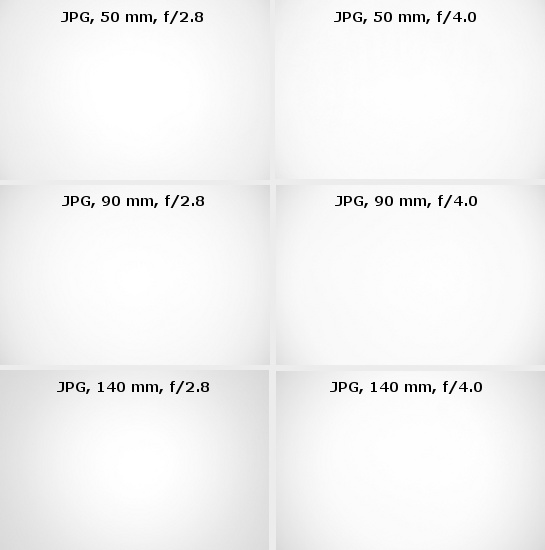
At 50 mm focal length and with the lens wide open the brightness loss in the frame corners reaches just 12% (−0.39 EV), decreasing to an imperceptible level of 10% (−0.29 EV) on stopping down the aperture to f/4.0. For the combination of 90 mm focal length and f/2.8 aperture the vignetting is 14% (−0.44 EV). On stopping down to f/4.0 and f/5.6 it decreases to respectively: 12% (−0.38 EV) and 10% (−0.31 EV).
The vignetting increases slightly at the maximum focal length where, by f/2.8, it reaches 15% (−0.46 EV). What’s interesting its level doesn’t change almost at all on stopping down the aperture to f/4.0 and f/5.6 where it gets to 15% (−0.46 EV) and 14% (−0.43 EV) respectively. A noticeable change appears only by f/8.0 where that aberration reaches 8% (-0.25 EV).
Please Support UsIf you enjoy our reviews and articles, and you want us to continue our work please, support our website by donating through PayPal. The funds are going to be used for paying our editorial team, renting servers, and equipping our testing studio; only that way we will be able to continue providing you interesting content for free. |
- - - - - - - - - - - - - - - - - - - - - - - - - - - - - - - - - - - - - - - - - - - - - - - -
The real image of vignetting can be seen only in RAW files. Let’s have a glance at thumbnails below.
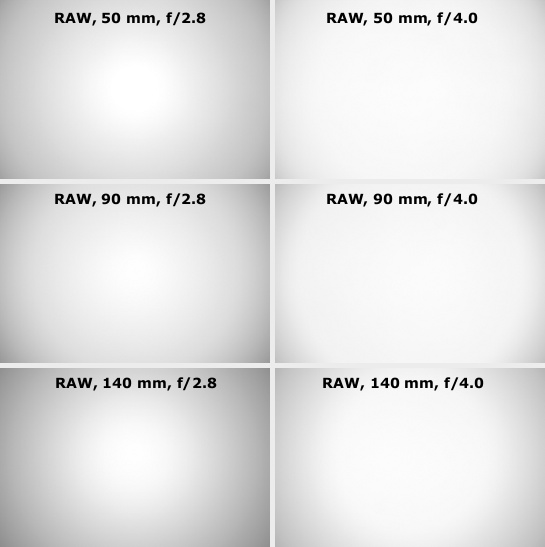
The fewest problems you encounter at the shortest focal length but even there, at the maximum relative aperture, the vignetting is clearly visible, amounting to 37% (−1.33 EV). That aberration decreases to 21% (-0.67 EV) after applying f/4.0. The problem becomes negligible by f/5.6 and f/8.0 where it is respectively 14% (−0.44 EV) and 9% (−0.26 EV).
In the middle of the focal range at the maximum relative aperture the light fall-off in the frame corners amounts to 39% (−1.41 EV). Then it decreases to 24% (−0.78 EV) on stopping down to f/4.0. Applying f/5.6 aperture makes the vignetting get lower to 17% (−0.53 EV). The problem becomes imperceptible only near f/8.0 where it amounts to just 11% (−0.34 EV).
The highest vignetting level you see at 140 mm where, with the lens wide open, you can lose as much as 43% of light (-1.65 EV) in the frame corners. Then the vignetting decreases a bit but that improvement is not especially sharp. By f/4.0 the level of that aberration we measured as 27% (−0.92 EV), by f/5.6 it reached 21% (-0.67 EV) and by f/8.0 it dropped to 15% (-0.46 EV). You can eliminate the vignetting completely only by f/11 where its level reaches 8% (−0.24 EV).
How the performance of the Fujinon in this category compares with that of its rivals? A duel with the Panasonic G X VARIO 35–100 mm f/2.8 P.O.I.S. ends close to a draw: the Panasonic had 40-45% of vignetting in RAW files so only a tad higher than that of the Fujinon. The full frame Canon EF 70–200 mm f/2.8L IS II USM fared better even though its task was more difficult, showing from 28% of light fall-off at the shortest focal length to 39% at the longest one. The Nikkor AF-S 70–200 mm f/2.8G ED VR II could beat that as its vignetting level never exceeded a level of 34% for any focal length. As you can see, when compared to those of professional 70-200 mm f/2.8 models, the results of the Fujinon are hardly impressive and, after all, that lens aspires to be treated as a professional device. We are not impressed - a huge APS-C lens should have performed better.
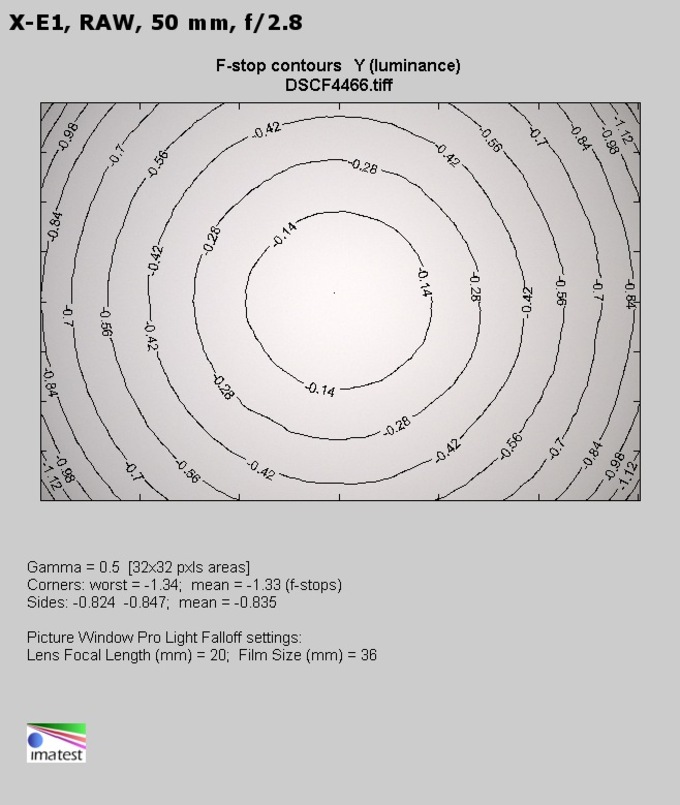 |
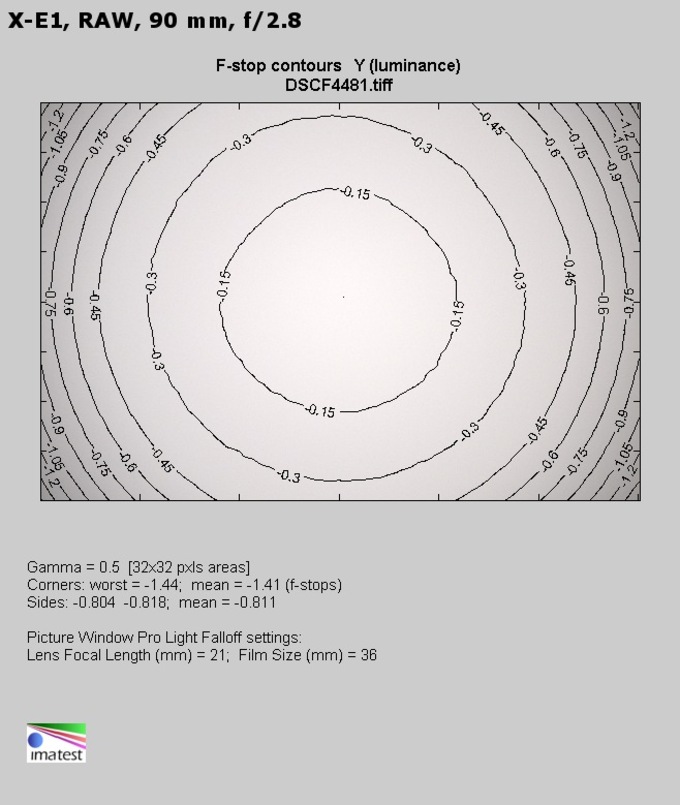 |
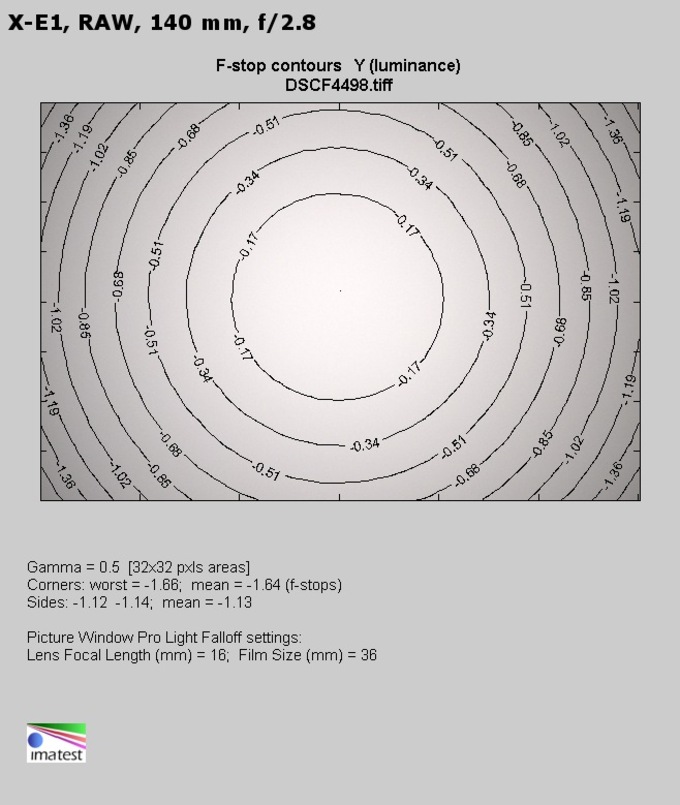 |






